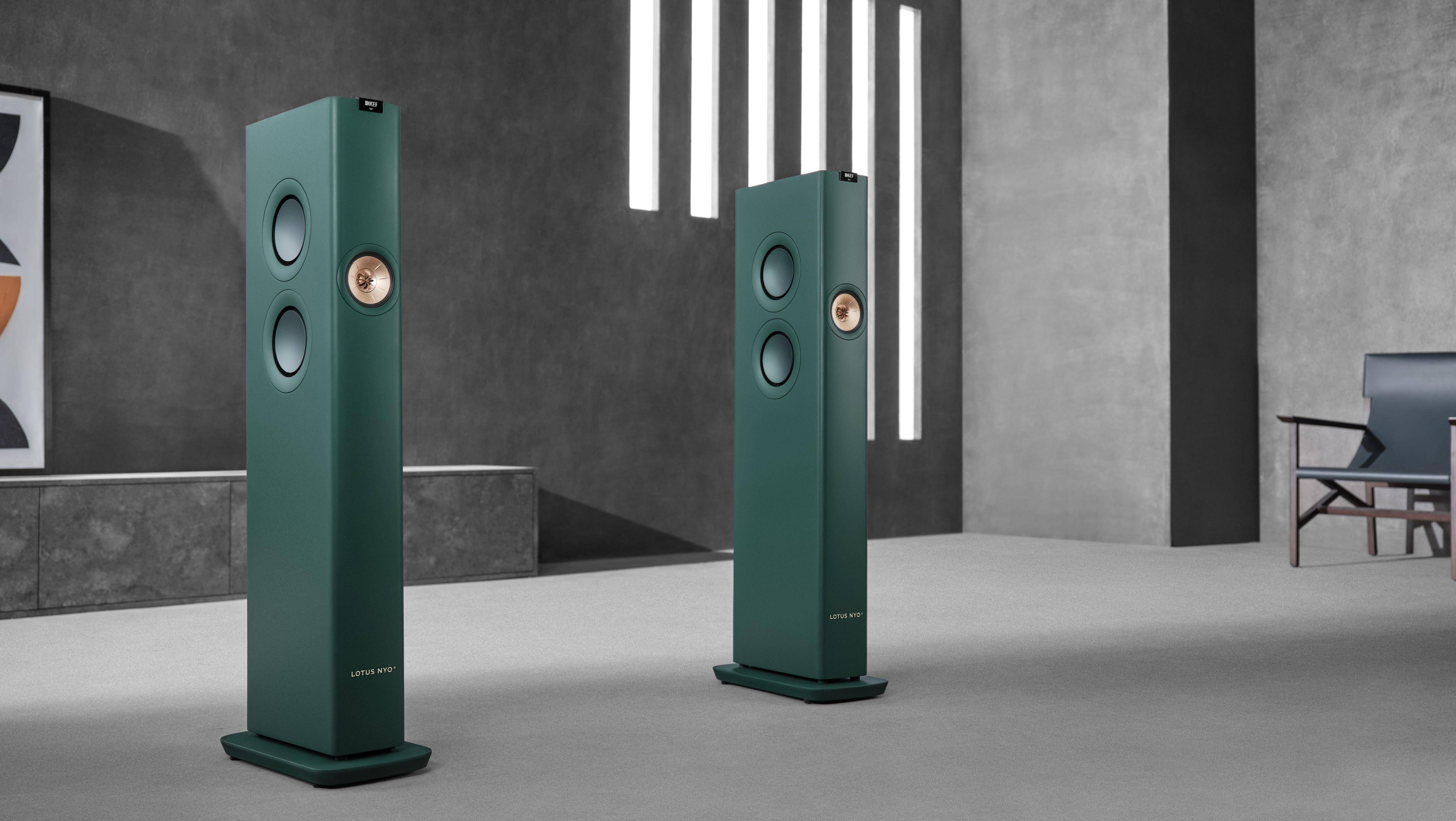
KEF LS60 Wireless Review
KEF, a name synonymous with acoustic innovation for over six decades, has consistently pushed the boundaries of loudspeaker design. This venerable British manufacturer, guided since its inception by Raymond Cooke's philosophy of enhancing performance through novel materials and technologies , has rarely shied away from bold engineering. The KEF LS60 Wireless floorstanding speaker system, launched to commemorate the company's 60th anniversary, is more than just another product; it is a striking testament to this enduring spirit and a compelling vision for the future of high-fidelity audio in an increasingly interconnected, wireless world. This is, by KEF’s own admission, a "statement product" , embodying the company's response to the evolving landscape of music consumption, where streaming has become the dominant mode of access.
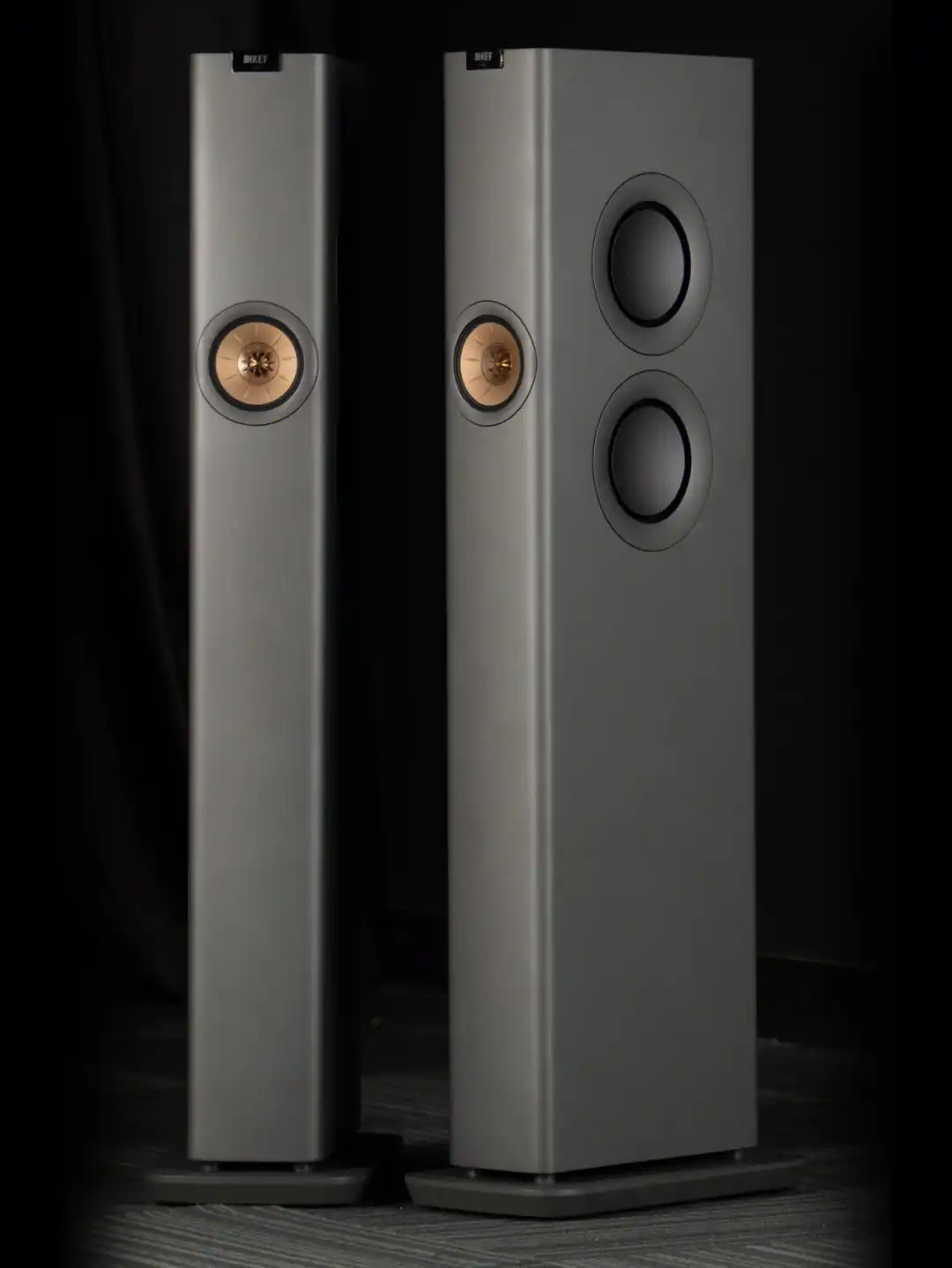
The LS60 Wireless presents an intriguing paradox: an "impossibly slim" and aesthetically refined silhouette that belies the profound acoustic power and sophisticated technology housed within. It is this juxtaposition that immediately captures attention, generating a palpable "wow factor" that KEF itself seems to cultivate. The very existence of such a product speaks to KEF's strategic intent, leveraging its rich heritage of acoustic research – including iconic innovations like the Uni-Q driver array – and applying it with masterful precision to the modern paradigm of integrated, active wireless systems. This is not merely a reaction to market trends but a proactive step to lead and redefine what is possible, carrying forward a legacy of "True to Nature" sound into a new technological epoch. Furthermore, the LS60 Wireless subtly addresses a long-standing challenge in high-end audio: the seamless integration of high-performance sound into contemporary living spaces. Its remarkable slenderness directly confronts the "lifestyle" dilemma, offering a solution that "can sit comfortably in most people's homes, not requiring special listening rooms". This deliberate design choice suggests an ambition to captivate not only the dedicated audiophile in a treated listening environment but also a broader audience that desires exceptional audio fidelity without the attendant visual complexity of traditional multi-component systems.
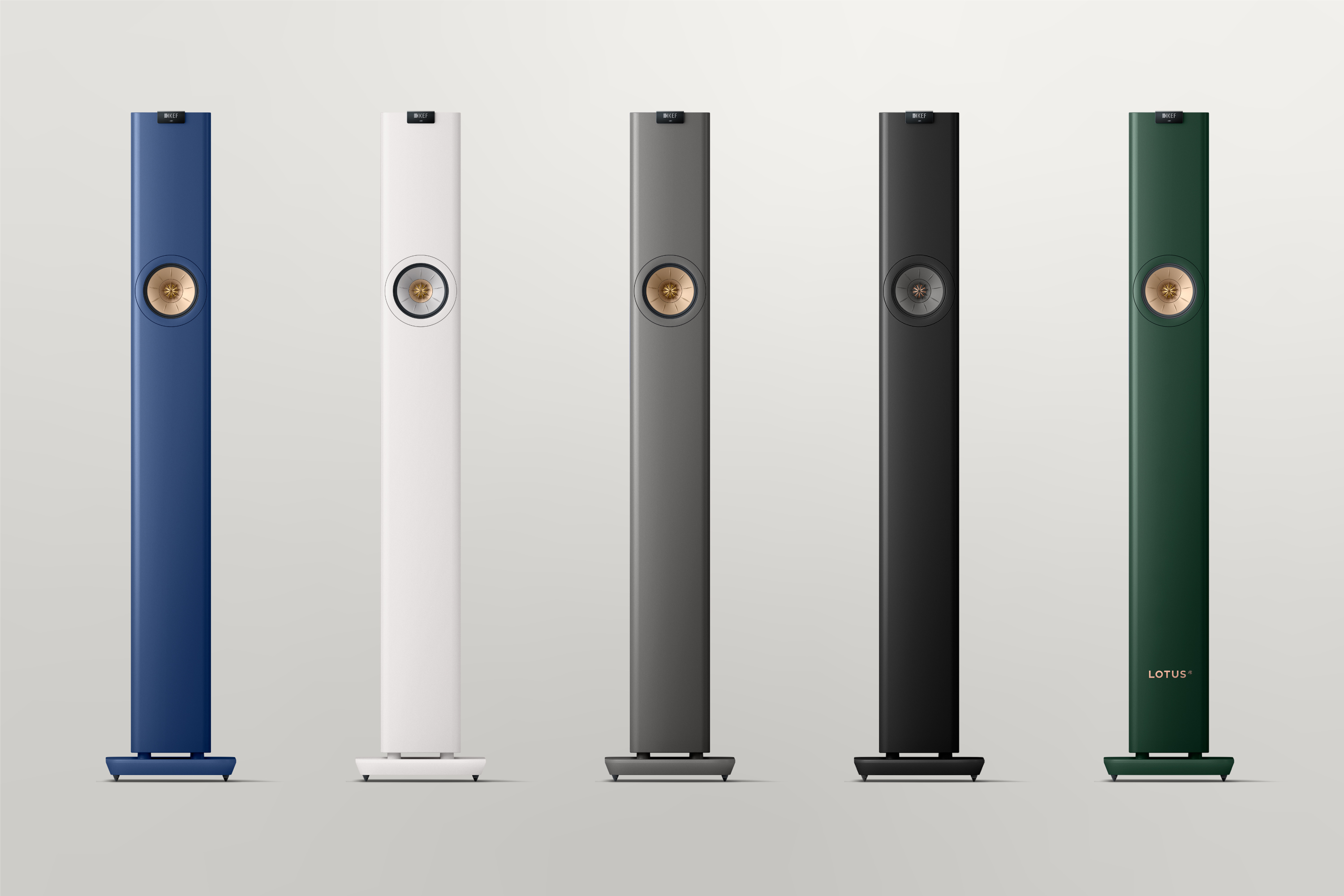
Design and Craftsmanship: A Symphony in Form
The KEF LS60 Wireless is a masterclass in industrial design, born from a collaboration with the esteemed designer Michael Young. This partnership has yielded a speaker system that is at once contemporary and timeless, exuding an understated elegance that complements its technological sophistication. The dominant visual characteristic is its "iconic slim structure" , with the main towers measuring a mere 13cm (5.1 inches) across. This extraordinary slenderness is not merely a stylistic flourish but a defining engineering challenge that informs much of the speaker's internal architecture. The overall impression is that of a "monolithic" yet graceful presence.
To cater to diverse interior aesthetics, the LS60 Wireless is offered in several matte finishes: Titanium Grey and Mineral White, designed to blend subtly into their surroundings, and a striking Royal Blue for those wishing to make a bolder statement. Adding a touch of automotive flair, a special Lotus Edition is available in the iconic British Racing Green. The matte-finished MDF cabinets feature softly radiused vertical edges, contributing to their clean, sculptural lines. Stability for these slender columns is provided by substantial plinths or base-plates, which also offer the choice of spikes for carpeted floors or rubber feet for hard surfaces.
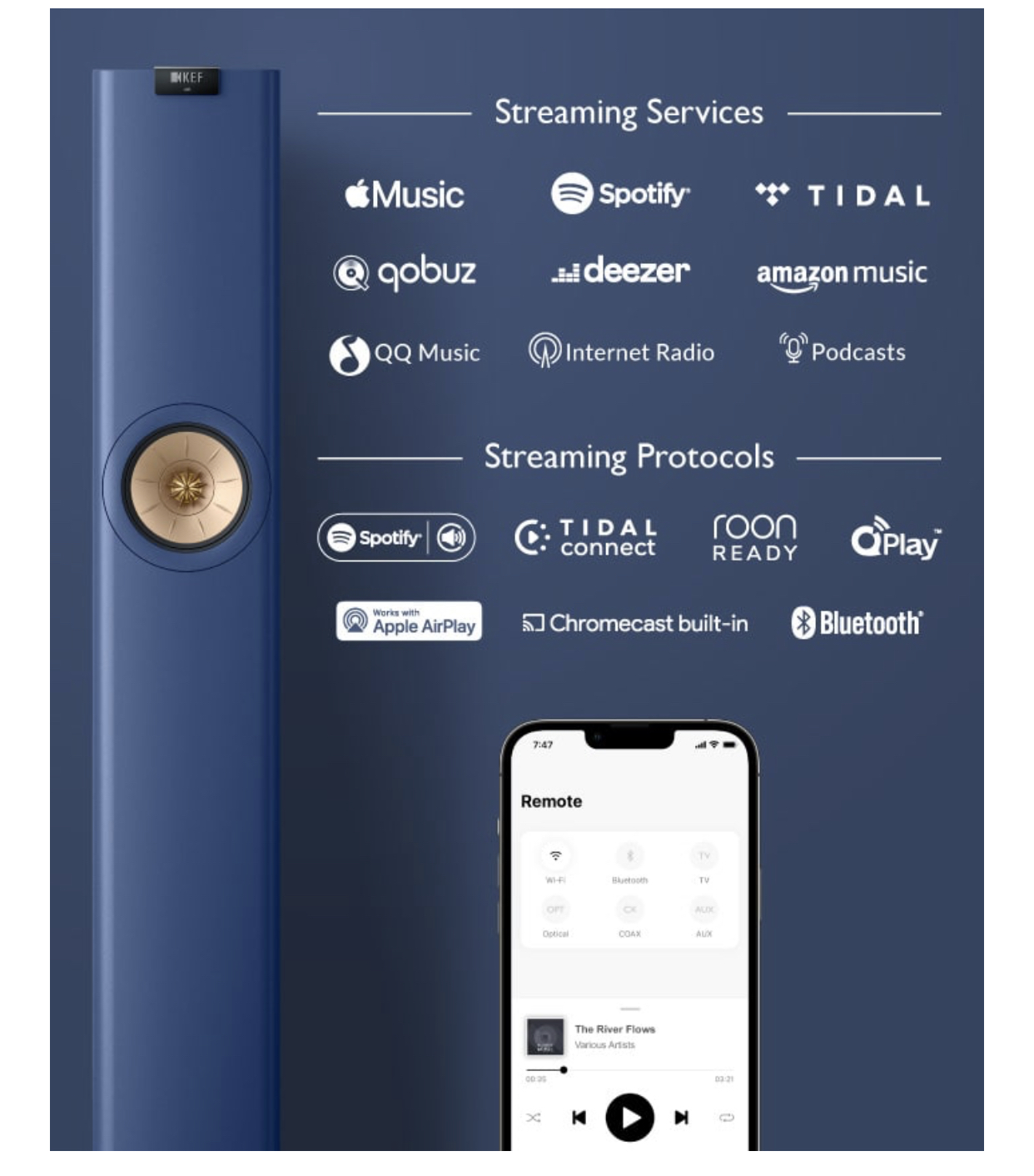
Beneath the stylish exterior lies a meticulously engineered structure. Each cabinet is internally divided into three compartments: the lower section houses the complex electronics, including the amplification and power supply, and incorporates thoughtful cooling considerations such as a discreet hot-air exhaust port and a cool air intake at the base. The upper compartments, which are sealed, are dedicated to the transducers. This internal organization underscores the principle that in the LS60 Wireless, design is not a superficial layer but an integral component of its performance. The extreme slimness, for instance, directly necessitates the development and implementation of KEF’s Uni-Core bass driver technology and profoundly influences the Single Apparent Source driver configuration. Even seemingly minor details, like the cabinet's gently curved edges and the Uni-Q driver's Shadowed Flare surround, are purposefully designed to minimize acoustic diffraction. This holistic approach, where form and function are so deeply intertwined, is a hallmark of KEF's engineering philosophy. The visual "wow factor," so often remarked upon, is thus not just an aesthetic achievement but a deliberate market differentiator, setting the LS60 Wireless apart in a competitive landscape and signaling its premium positioning even before a single note is played.
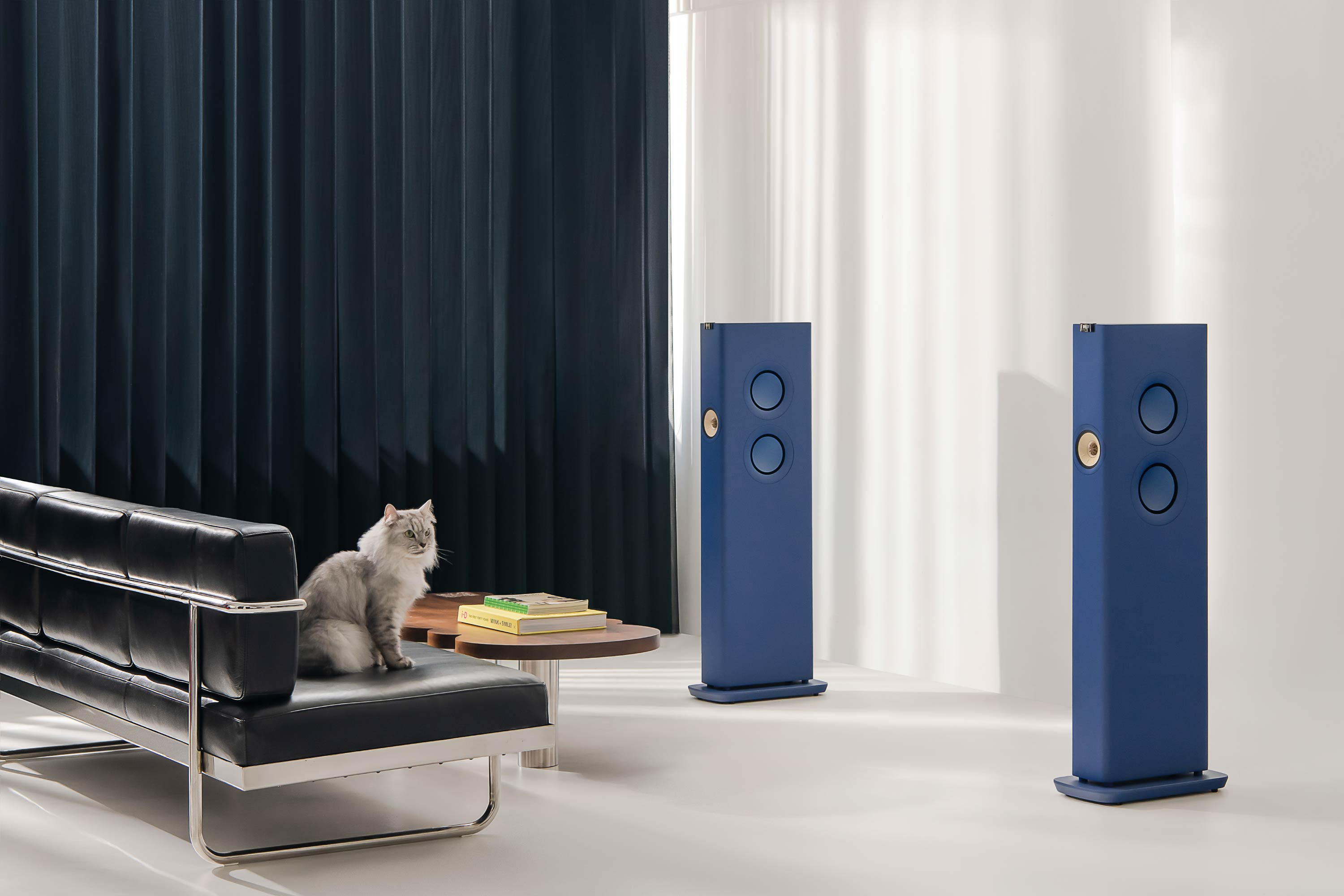
The Technological Heart: KEF's Engineering Prowess Unveiled
The slender form of the LS60 Wireless conceals a formidable array of KEF's most advanced acoustic technologies, each meticulously integrated to work in concert. This is where the company's decades of research and development truly come to the fore, demonstrating an engineering prowess that allows such a compact system to deliver a sound of remarkable scale and fidelity.
A. Single Apparent Source (SAS) and the 12th Generation Uni-Q with MAT
At the core of the LS60's acoustic design is KEF's Single Apparent Source (SAS) technology, a concept adapted from the company's flagship Blade loudspeakers. SAS aims to achieve the acoustic ideal of a true point source, where all frequencies – low, midrange, and high – appear to radiate from a single point in space. The benefits of this approach are manifold, contributing to exceptionally coherent sound, precise imaging, accurate sonic reproduction over a wide listening area, a remarkably stable soundstage, and an expansive 'sweet spot'.
Central to the SAS configuration is the latest 12th Generation Uni-Q driver array. Specifically developed for the LS60 Wireless, this is the smallest Uni-Q KEF has ever produced, a necessity dictated by the cabinet's slim profile. It comprises a 4-inch (100mm) aluminium cone midrange driver with a concentrically mounted 0.75-inch (19mm) vented aluminium dome tweeter.
Enhancing the Uni-Q's performance is KEF's groundbreaking Metamaterial Absorption Technology (MAT). This intricate, maze-like structure, positioned behind the tweeter, is designed to absorb an astonishing 99% of the unwanted sound radiating from the rear of the tweeter dome. By effectively creating an 'acoustic black hole', MAT eliminates reflections that would otherwise interfere with the tweeter's forward output, resulting in a purer, more natural, and significantly less distorted high-frequency reproduction. Further refinements to this Uni-Q iteration include a tweeter gap damper and a new Z-Flex surround, both contributing to improved dispersion characteristics and reduced distortion. The consistent highlighting of MAT across reviews underscores its significance; it is a targeted acoustic solution that directly translates to audible improvements in clarity and detail, particularly in the critical midrange and treble frequencies.
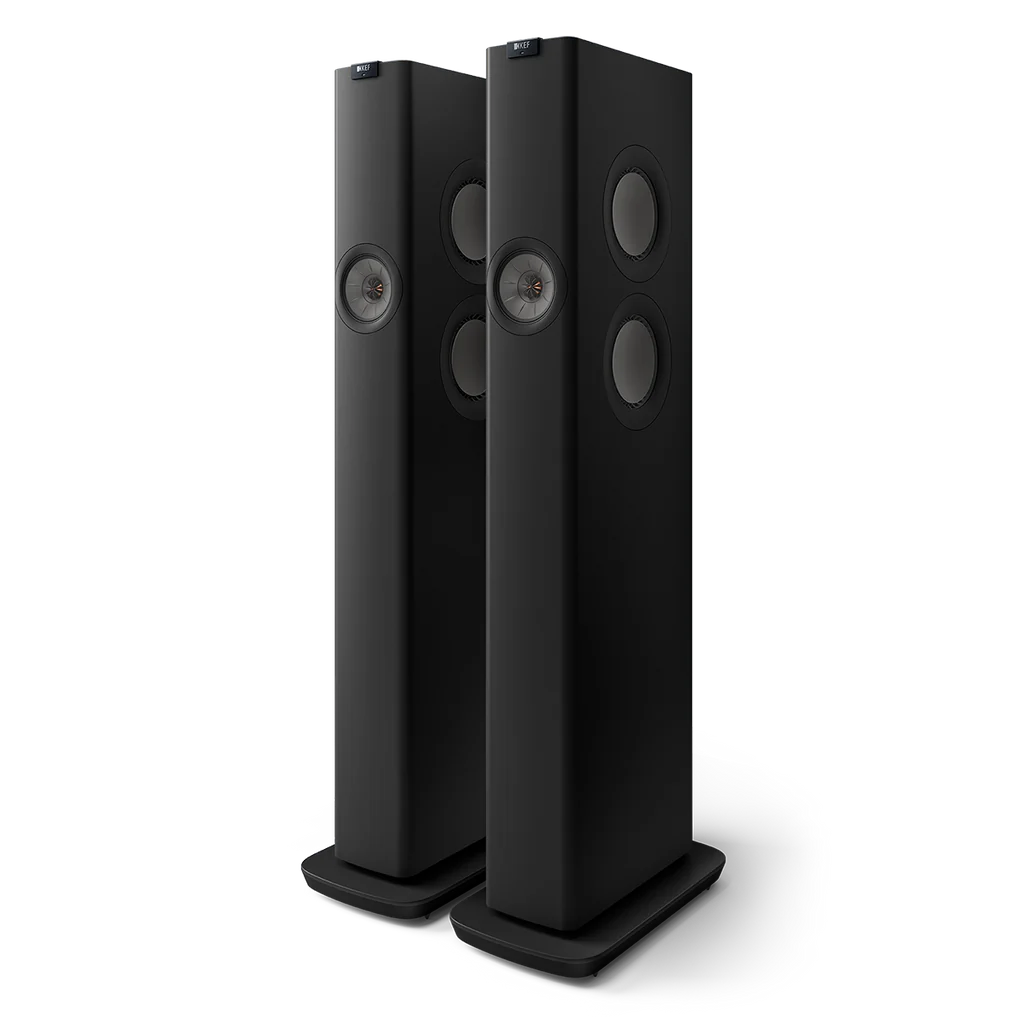
B. The Uni-Core Bass Engine: Deep Power from Slender Frames
Achieving substantial and articulate bass from such extraordinarily slim enclosures presented a significant engineering hurdle. KEF's ingenious solution is the Uni-Core bass driver technology. Each LS60 Wireless speaker incorporates four 5.25-inch (135mm) Uni-Core woofers. This patented technology features pairs of drivers mounted back-to-back in a force-cancelling arrangement, sharing a single, powerful motor system with overlapping, concentrically-arranged voice coils. This innovative design allows for greater driver excursion and output from a very compact space, delivering maximum bass performance from the limited internal volume of the cabinets. Although Uni-Core technology made its public debut in KEF's diminutive KC62 subwoofer, it was originally developed specifically for the LS60 Wireless project.
The force-cancelling aspect is crucial: by having drivers operating in opposition, the reactive forces are effectively nullified, virtually eliminating cabinet vibrations that could otherwise color the sound. This ensures that the sound heard is purely that of the drivers, unmarred by enclosure resonances. Further contributing to the woofers' performance are KEF's P-Flex surrounds. These feature a unique pleated design engineered to withstand the high internal pressures generated within the small sealed enclosures without buckling, thereby allowing for more linear driver movement and reducing distortion.
C. Integrated Amplification & Digital Signal Processing (DSP): The Unseen Conductor
The LS60 Wireless is a fully active system, meaning that amplification is built directly into the speakers, with each driver section receiving dedicated power. Each speaker employs a sophisticated tri-amped configuration, delivering a total of 700 Watts per speaker (1400 Watts for the system). This comprises a potent 500W Class D amplifier for the low-frequency (LF) Uni-Core drivers, a 100W Class D amplifier for the midrange (MF) section of the Uni-Q, and a 100W Class AB amplifier for the high-frequency (HF) tweeter. KEF's rationale for this hybrid amplifier class arrangement is based on the differing demands of each frequency band: Class D provides high efficiency for the continuous power demands of bass and midrange, while Class AB is favored for the tweeter due to its ability to deliver sudden large peaks and its wide high-frequency bandwidth without requiring an output filter.
Orchestrating this complex interplay of drivers and amplifiers is KEF's proprietary Music Integrity Engine, the sophisticated Digital Signal Processing (DSP) that acts as the "brain" of the LS60 Wireless. This DSP is precisely tuned to ensure that the Single Apparent Source configuration and the Uni-Core drivers work in perfect harmony. It also provides crucial low-frequency phase correction for pinpoint timing accuracy.
Several advanced DSP-driven technologies further refine the LS60's performance. Smart Distortion Control Technology (SDCT) is an active distortion reduction system that compares the measured motion of the woofer cones with stored driver parameters, then applies a correcting signal via DSP to significantly reduce bass distortion, enabling the speakers to produce deep, loud, and remarkably clean low frequencies. Complementing this is Intelligent Bass Extension (iBX), also known as Dynamic EQ. This allows the LS60 Wireless to achieve impressive bass extension – down to a claimed 26Hz (-6dB) or 31Hz (±3dB) depending on settings – at normal listening levels. However, as volume levels increase towards their maximum, iBX dynamically and progressively reduces the lowest frequencies to prevent driver overload and audible distortion, effectively pushing the boundaries of Hofmann's Iron Law, which posits that low bass, small enclosure size, and high sensitivity cannot all be achieved simultaneously. Finally, the DSP incorporates Phase Correction, an all-pass FIR filter that pre-conditions the signal to compensate for phase distortions introduced by the crossover, ensuring that sound from all driver sections arrives at the listener's ears simultaneously, thereby enhancing coherence and transient response.
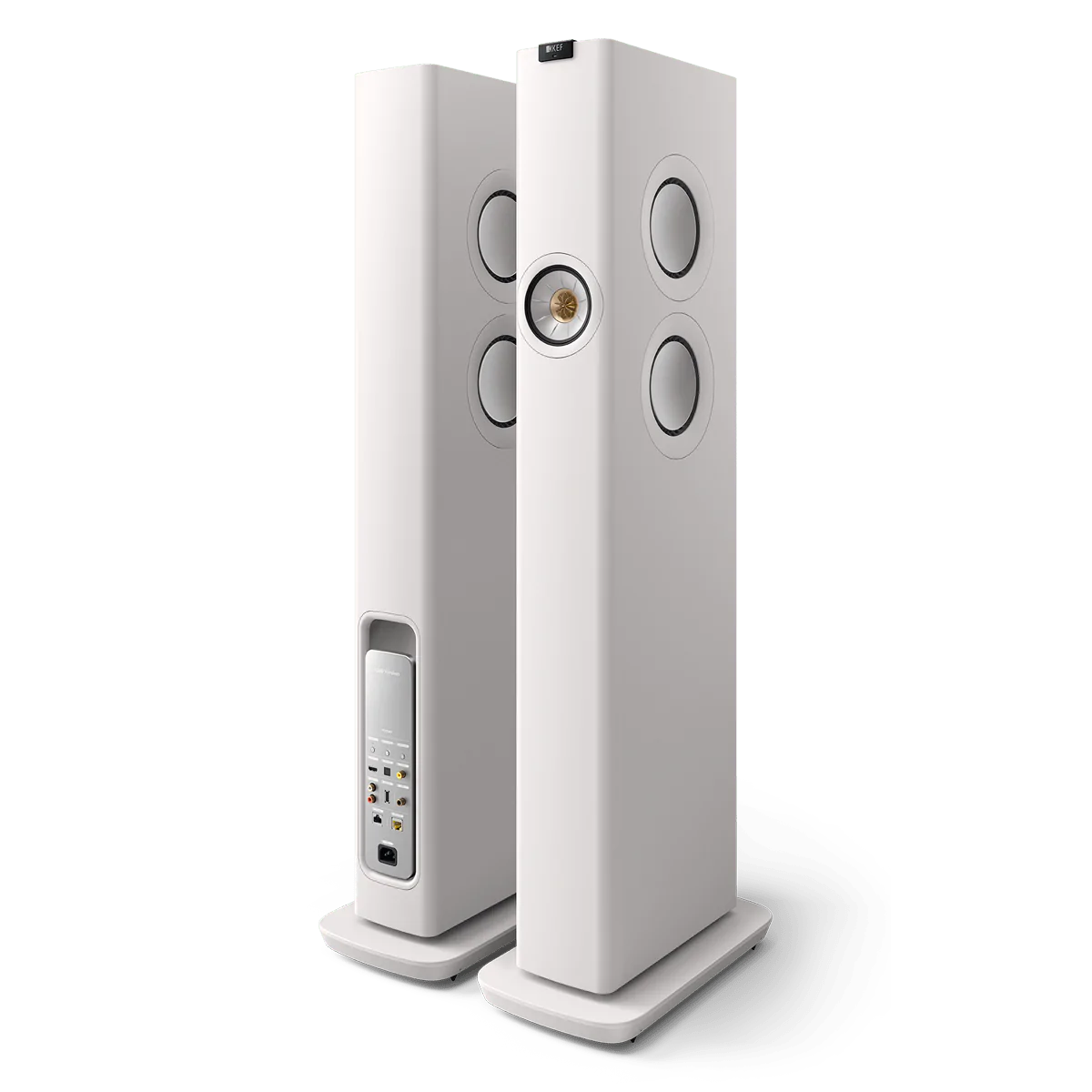
The technological ensemble within the LS60 Wireless is a testament to KEF's system-level design philosophy. No single technology operates in isolation; rather, they are deeply interdependent. The striking slim design necessitates the Uni-Core technology for impactful bass. Uni-Core's inherent force-cancelling nature, in turn, provides a stable, vibration-free platform crucial for the delicate operation of the Uni-Q driver. The Single Apparent Source configuration relies on the precise physical and acoustic alignment of the Uni-Q and the Uni-Core woofers. All these elements are then meticulously orchestrated by the sophisticated DSP. It is this profound integration that enables KEF to extract such a high level of performance from a constrained form factor. KEF itself has stated that the performance goals set for the LS60 Wireless "could not have been met... using passive technology" , underscoring how the active design, with its bespoke amplification and advanced DSP, is not merely an alternative but a fundamental enabler of its "impossible" combination of slender aesthetics and profound sonic output.
Connectivity and Control: Seamless Integration in the Modern Age
The KEF LS60 Wireless is conceived not just as a pair of loudspeakers, but as a comprehensive, self-contained audio system designed for the modern, connected home. Its extensive array of wired and wireless connectivity options ensures that it can serve as the central hub for virtually any audio source, embodying KEF's promise to "Play anything. Hear everything".
Wired and Wireless Universe
The primary (right) speaker acts as the main interface, housing a comprehensive suite of inputs. For wired sources, it offers an HDMI eARC port, allowing for high-quality audio connection from a television (supporting up to 24-bit/192kHz resolution). This is complemented by an optical TosLink input (up to 24-bit/96kHz), a coaxial S/PDIF input (up to 24-bit/192kHz), and a pair of analog RCA line-level inputs for traditional Hi-Fi components like turntables (with an external phono stage) or CD players.
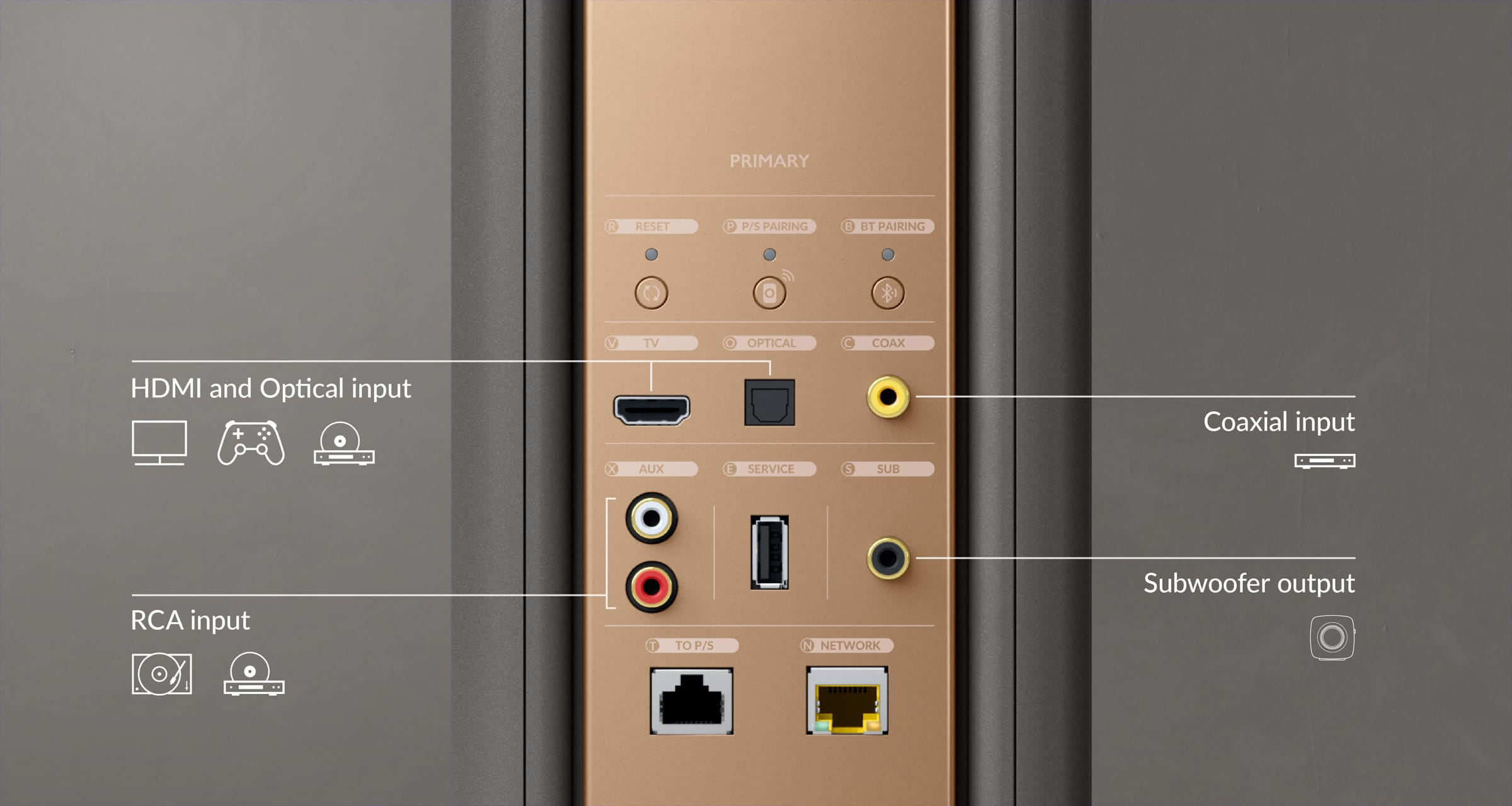
Wireless connectivity is equally robust. The LS60 Wireless features dual-band Wi-Fi, Apple AirPlay 2, Google Chromecast, and Bluetooth 5.0 (supporting SBC and AAC codecs). This extensive suite allows for seamless streaming from a vast range of devices and services. The system is Roon Ready certified, a significant plus for many audiophiles. Supported file formats are comprehensive, including PCM streams up to 24-bit/384kHz, DSD up to DSD256 (via DoP for Roon), and full MQA decoding and rendering for Tidal Masters and other MQA sources.

The interspeaker connection, linking the primary and secondary speakers, offers a choice: a low-latency intelligent wireless connection (transmitting audio up to 24-bit/96kHz, possibly using WiSA technology as noted by one source , or KEF's proprietary link ) or a wired Ethernet connection using the supplied cable, which supports higher resolution playback up to 24-bit/192kHz. While wireless convenience is a key selling point, the provision of a wired option for maximum fidelity is a nod to audiophile purists, acknowledging that for the ultimate performance, a physical link can still offer advantages. This presents a subtle trade-off for those seeking absolute wireless purity at the highest possible resolution. For those desiring even more profound low-frequency reinforcement, each speaker is equipped with a dedicated RCA subwoofer output, allowing for the seamless integration of one or two external subwoofers, such as KEF's own KC62.
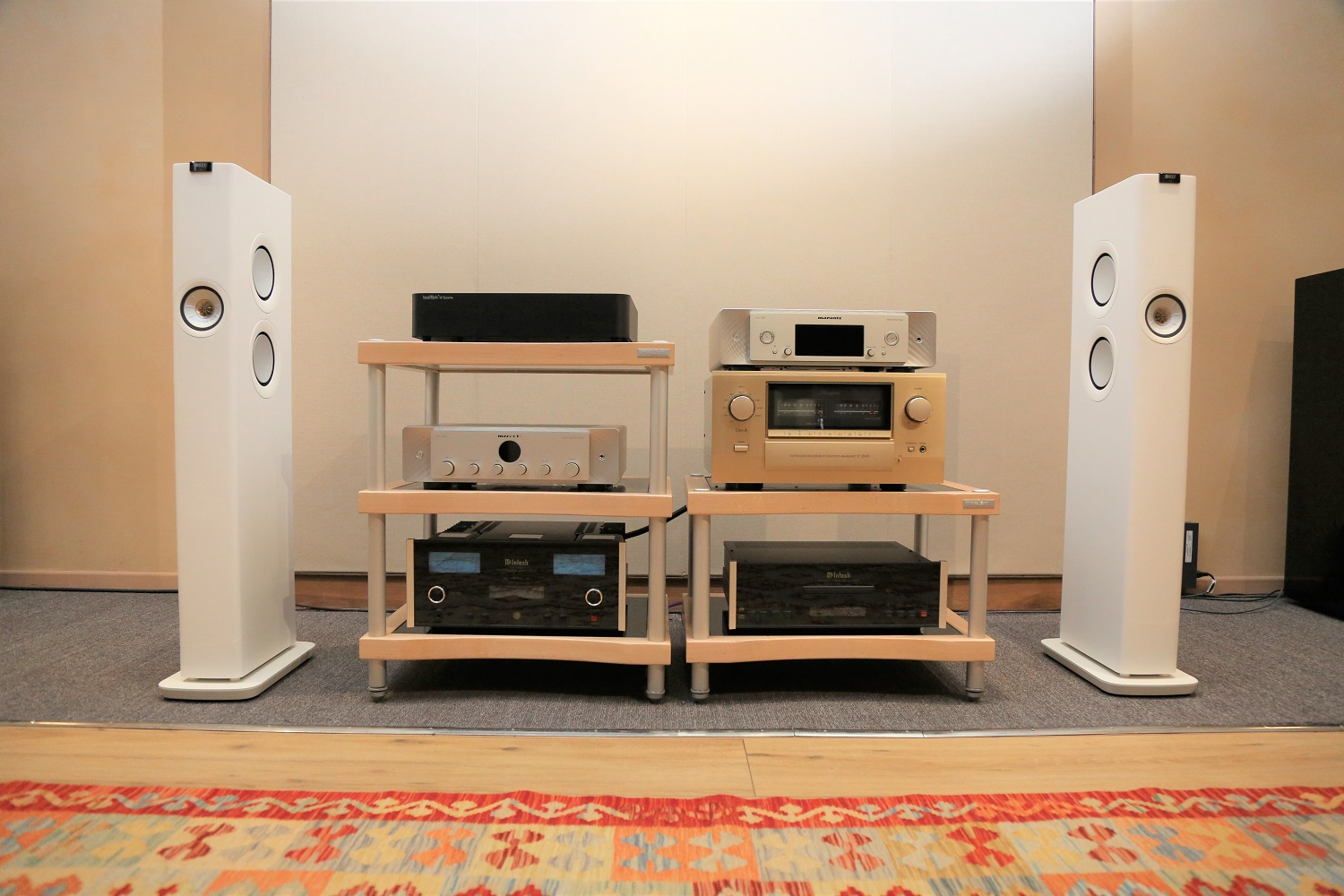
The KEF Connect App: Your Command Centre
The primary means of controlling the LS60 Wireless, beyond basic functions on the included physical remote , is the KEF Connect app, available for iOS and Android devices. This app serves as the command center for the system, facilitating intuitive onboarding and setup, playback control, access to integrated streaming services (such as Amazon Music, Qobuz, Deezer, internet radio, and podcasts), firmware updates, and network quality checks. Users can also stream directly from native apps like Spotify Connect and Tidal Connect.
Crucially, the KEF Connect app provides access to powerful room EQ and sound settings. These are offered in two modes: a 'Normal' mode provides user-friendly adjustments based on parameters like the speakers' distance from the front wall and the general acoustic character of the room (Damped, Moderate, or Lively). For more granular control, an 'Expert' mode allows manual adjustments to bass output to compensate for room placement, treble trim for tailoring high-frequency response, enabling or disabling Phase Correction, and selecting different Bass Extension modes (typically Standard, Extended/Extra, and Less). User experiences with the app are generally positive, with descriptors like "bullet proof" and "perfectly usable, stable and logical" appearing in feedback. However, some initial setup quirks or minor operational bugs have been noted. More significantly, the reliance on an app for core functionalities raises valid long-term concerns among some users regarding ongoing software support and the potential for app obsolescence to impact the hardware's usability over time – a common apprehension with sophisticated active speaker systems.

Setup and Usability
Setting up the LS60 Wireless is generally reported to be a straightforward process, with the KEF Connect app guiding users through the necessary steps. KEF has also paid attention to the unboxing experience, with clever packaging designed for easy removal and placement of the speakers. Small LED indicators on the front panel of each speaker provide status information , though some discussions have arisen regarding the choice of LED colors for optimal visibility.
The comprehensive connectivity suite of the LS60 Wireless is a core component of its value proposition. It aims to be a true audio-visual hub, capable of replacing multiple separate components and appealing to the modern desire for simplicity and elegant integration. The KEF Connect app is pivotal to this ecosystem, not just for playback but for essential setup, firmware management, and critical sound customization through its EQ settings. This deep integration, while powerful, also highlights a dependency that does not exist with traditional passive Hi-Fi systems, making the long-term viability of the software platform a key consideration for potential owners.
The Audition: Sonic Tapestries Unveiled
Beyond the impressive specifications and elegant design, the ultimate measure of any loudspeaker system lies in its sonic performance. The KEF LS60 Wireless promises a transformative listening experience, and by all accounts, it largely delivers, weaving intricate and immersive sonic tapestries that captivate and engage. The following impressions are a synthesis of critical listening, informed by a wide range of musical material and the collective experiences reported.
A. Overall Character and Coherence: The Single Voice
The most immediate and striking sonic characteristic of the LS60 Wireless is its extraordinary coherence and seamless integration across the entire frequency spectrum. This is the audible manifestation of KEF's Single Apparent Source technology at its finest. There is no sense of disparate drivers handling different parts of the music; instead, sound emanates from a unified, singular point, creating an experience where, as one reviewer aptly put it, "music just happened". The tonal balance is consistently described as neutral and natural , allowing the inherent character and quality of the recording to take center stage, with the speakers "relaying the music as faithfully as possible". This neutrality does not equate to a sterile or analytical presentation; rather, it forms the foundation for a deeply engaging and "immersive and focused stereo image" , often described as creating a "bubble of sound" that envelops the listener.
To test this remarkable coherence, a complex, multi-layered track such as The Avalanches' "Music Makes Me High" proves illustrative. The LS60s navigate its intricate collages with aplomb, maintaining clarity and separation between the myriad samples and instrumental lines without dissecting the joyful, cohesive energy of the musical whole. Similarly, on a demanding orchestral piece like Stravinsky's "Rite of Spring," particularly during its rhythmically complex and densely orchestrated passages, the speakers refuse to become congested, presenting the raw, primal power with unwavering composure and intelligibility.
Perhaps the most astonishing aspect of the LS60's performance, given their slender dimensions, is their bass response. They deliver a low-frequency foundation that is not only surprisingly deep – extending down to a claimed 26Hz (-6dB) or 31Hz (±3dB) – but also remarkably articulate and controlled. This is "palpable bass that belied the speakers' small size". The quality of the bass is consistently praised: it is not merely voluminous but also textured, agile, and exhibits excellent pitch differentiation. Bass notes possess sharply defined leading edges – "edges are straight and true" – and decay naturally, without overhang or boominess, a testament to the effectiveness of the Uni-Core drivers, Smart Distortion Control Technology, and Intelligent Bass Extension.
Tracks like Shaed’s "Trampoline (Jauz Remix)" , with its subterranean bassline, or the potent low-frequency information in Hans Zimmer's "Time" from the Inception OST or his soundtrack for Dune: Part 2 , reveal the LS60's ability to convey weight, texture, and impact with authority. For a demonstration of bass agility and detail, Massive Attack's "Angel" is revelatory; the iconic, descending bassline is rendered with its full measure of menace and resonant depth, each throb distinct and controlled, showcasing the speakers' ability to handle sustained low-frequency information with unwavering grip.
C. Midrange: The Soul of the Music – Voices and Instruments Unveiled
The midrange is where the soul of music resides, and the LS60 Wireless excels in this critical region, delivering vocals and instruments with exceptional clarity, detail, and naturalness. "Vocals were pure and centrally placed" , and there's an "immediacy to how it handles vocalists, offering impressive insight into their character, attitude, and technique". The 12th Generation Uni-Q driver, benefiting significantly from the Metamaterial Absorption Technology, presents a midrange that is uncolored, open, and richly communicative.
Female vocals, such as those on Florence Adooni's "Kinne" or Florence + The Machine's "King" , soar effortlessly, every nuance and inflection conveyed with precision. Male vocals, as heard on Traffic’s "John Barleycorn Must Die" , possess a natural timbre and body, well-separated from accompanying acoustic instruments. The raw, emotive delivery of English Teacher's "The World’s Biggest Paving Slab" is presented with visceral impact. For a more intimate portrayal, Norah Jones' "Come Away With Me" showcases the LS60's ability to render the subtle textures of her voice and the warm resonance of the piano with captivating realism.
D. Treble: Air, Detail, and Refinement – Shimmer Without Sibilance
The high-frequency performance of the LS60 Wireless is characterized by a pleasing combination of air, detail, and refinement. Violins are described as "sweet" , and the treble possesses "bite and shine" when the music demands it , delivered with a crisp determination that avoids any hint of harshness, "splashiness," or sibilance, even at higher volumes. The MAT-equipped tweeter excels at retrieving fine details, contributing to a sense of openness and space in the presentation.
Well-recorded classical pieces, such as Debussy’s Prélude à l’après-midi d’un faune as performed by Les Siècles , allow the delicate interplay of string textures and woodwind harmonics to breathe. The intricate cymbal work and burnished trumpet tones on a classic jazz recording like Miles Davis' "So What" are rendered with exquisite detail and timbral accuracy, the metallic shimmer of the cymbals decaying naturally into a well-defined acoustic space.
E. Soundstage and Imaging: Crafting the Sonic Landscape
The LS60 Wireless crafts a sonic landscape that is both expansive and precisely defined. The soundstage exhibits impressive width, depth, and height , often described as "vast, completely filled-in and three-dimensional". Within this stage, imaging is exceptionally stable and well-focused, with instruments and voices maintaining their distinct positions with unwavering precision. The speakers have an uncanny ability to disappear, leaving behind "aural images completely divorced from the speakers" themselves. This is the Single Apparent Source concept realized to its full potential.

Live recordings, such as Chick Corea and Hiromi Uehara’s Duet , are particularly well-served, with the LS60s adeptly recreating the acoustic signature of the performance venue and the precise placement of the two pianos. For an even more dramatic demonstration of soundstaging prowess, Roger Waters' "Amused to Death," with its QSound encoding, becomes a truly immersive experience, as sound effects and musical elements are positioned with holographic accuracy in a vast, wrap-around soundfield.
F. Dynamics and Scale: From Whispers to Crescendos
The LS60 Wireless demonstrates an impressive ability to handle wide dynamic swings with effortless composure, moving from the quietest, most delicate passages to powerful crescendos without any sense of strain, compression, or congestion. As one reviewer noted, they can "shift from 'tense, urgent whisper' to 'all-out firefight' in an instant". There is a palpable sense of scale and authority to their presentation, conveying the power and impact of instruments convincingly. Micro-dynamic nuances, the subtle shifts in intensity that bring music to life, are also rendered with finesse.
The aforementioned Hans Zimmer soundtracks for Inception ("Time") and Dune: Part 2 provide ample opportunity for the LS60s to showcase their macro-dynamic capabilities, handling the massive swells of sound with power and control. For an appreciation of micro-dynamics, a well-recorded solo piano piece, such as Beethoven's "Moonlight Sonata" played with sensitivity, reveals the speakers' ability to track the subtle variations in touch and pedaling that define a nuanced performance. Similarly, the explosive orchestral outbursts in Holst's "Mars, the Bringer of War" from The Planets are delivered with visceral impact and a grand sense of scale.
G. Room Interaction and Placement
Like any high-performance loudspeaker, the LS60 Wireless is sensitive to room placement, though its advanced DSP offers tools to mitigate some room-induced anomalies. The side-firing Uni-Core woofers mean that placement too close to sidewalls should be avoided to prevent excessive bass reinforcement. One reviewer found that aiming the speakers straight ahead, without any toe-in, yielded excellent results in their room. The KEF Connect app's room EQ settings, particularly the 'Wall Mode' (which can apply a -3dB cut, for example ), 'Bass Extension' modes, and 'Treble Trim', are reported to be effective in helping to tailor the sound to different room acoustics and placements. Erin's Audio Corner, for instance, found the "wall mode" and "bass in extended mode" particularly helpful in achieving a balanced response when speakers were near a wall.
In terms of output, the LS60 Wireless is rated at a maximum SPL of 111 dB , which should be more than adequate for most domestic listening environments. However, in very large rooms or when listening from exceptionally far distances, some users might find their ultimate output capabilities to be a limiting factor compared to larger, more traditional passive systems with very powerful external amplification.
The consistently lauded coherence and integration, the "single voice" character of the LS60 Wireless, strongly suggest that KEF's holistic design approach – where drivers, amplification, and DSP are conceived and optimized as a unified system – pays significant audible dividends. The astonishing bass performance from such slender towers is a genuine feat of engineering, indicating that the Uni-Core and DSP technologies are highly effective solutions to a challenging physics problem. Furthermore, the sophisticated DSP, including features like Phase Correction , acts not as a corrective crutch for inherent flaws, but as a powerful enhancer of the system's acoustic design, also providing valuable user-tunability for optimal room integration.
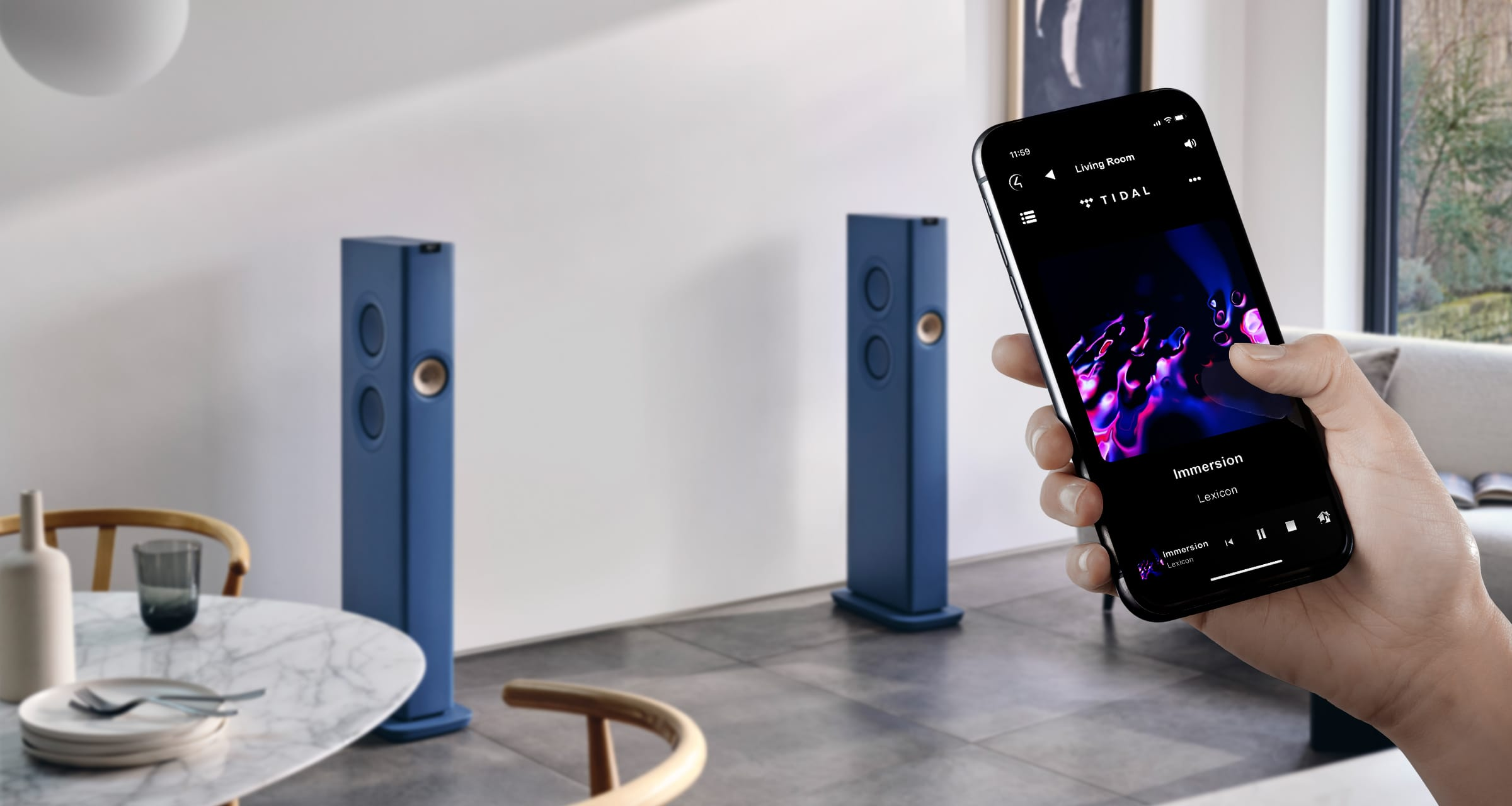
In Context: Comparisons and Considerations
Evaluating the KEF LS60 Wireless requires placing it within the broader context of the high-fidelity audio landscape. It represents a distinct approach that challenges traditional paradigms and necessitates a careful consideration of an audiophile's priorities and preferences.
The Active Advantage vs. Traditional Separates
The LS60 Wireless is often described as an "end-game product tuned and powered by KEF's knowledge and engineering". Its all-in-one nature offers compelling simplicity and a highly optimized system where the amplifiers and DSP are perfectly matched to the drivers and enclosure. This integration is a core strength, promising a level of synergy that can be difficult and expensive to achieve with separate components. Indeed, several users reported selling extensive and costly traditional Hi-Fi setups in favor of the LS60s, expressing greater satisfaction with the KEFs' performance and convenience. One owner, krell303, found their previous $10,000 separates system "not even close" to the LS60s in overall musical satisfaction.

However, the traditional path of passive loudspeakers and separate amplification retains its allure for many. This approach offers greater flexibility for component swapping, system upgrades over time, and the potential, at the highest echelons, for even greater ultimate resolution with "state of the art external amplifiers". The LS60 Wireless, by its very nature as an integrated system, largely precludes the audiophile hobby of tweaking and component matching. Thus, the choice often comes down to a fundamental preference: the plug-and-play, system-optimized performance of a high-end active solution versus the customizable, evolving journey offered by separates.
Comparisons with Specific Competitors
When compared to other high-end active streaming loudspeakers, the LS60 Wireless generally holds its own and is often noted for its relative affordability within this premium segment. For instance, against the Dynaudio Focus 50, the LS60 is more accessibly priced, though it lacks the Focus 50's Dirac Live room correction capabilities. Compared to the DALI Rubicon 8C system (which requires an additional Sound Hub), the LS60 is significantly less expensive. In a direct comparison by Soundstage! Simplifi, the LS60 Wireless was favored over a system comprising Elac Navis ARF-51 active speakers partnered with an NAD C 658 streaming DAC-preamp, with the KEFs exhibiting superior coherence, bass performance, and dynamics.
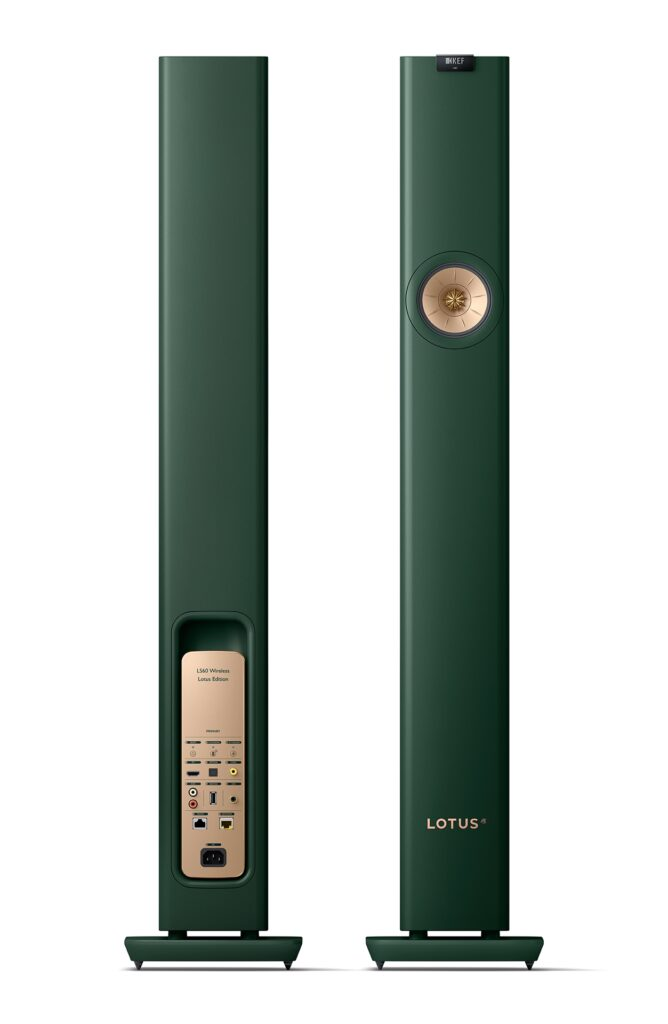
Reliability and Longevity: The Achilles' Heel of Active Systems?
Despite the overwhelmingly positive assessments of its sonic and aesthetic qualities, a recurring theme of concern among users and reviewers alike pertains to the long-term reliability and serviceability of complex active loudspeaker systems like the LS60 Wireless. The integration of amplifiers, DACs, streaming modules, and sophisticated DSP within the speaker enclosure means that a failure in any one of these components can potentially render the entire system inoperable. Phrases like being "terrified of them dying on me one day" reflect a genuine apprehension. Concerns are further compounded by reports of KEF's non-transferable warranties and potentially high repair costs for out-of-warranty issues.
While some users have reported positive experiences with KEF customer support, including instances of parts being provided free of charge even outside the warranty period , the fear of costly repairs or premature obsolescence remains a significant factor. The reliance on proprietary software and apps also introduces the risk of these becoming unsupported or incompatible with future operating systems or hardware, potentially "bricking" an otherwise functional piece of audio equipment. This "elephant in the room" for active speaker systems is likely a major hurdle for wider adoption among cautious audiophiles accustomed to the decades-long lifespan of well-maintained passive components.
Value Proposition: The Evolving Price Point
The KEF LS60 Wireless was launched at a premium price point, typically around £6000 or $7000. However, over time, the street price has seen a notable reduction, settling closer to the £4000 / $4999 / $5000 mark in many markets. This price adjustment significantly alters the value equation. While still a considerable investment, the revised pricing makes the LS60 Wireless a more compelling proposition, especially when considering that no additional expenditure on amplification or a separate streamer is required. Some users and reviewers have positioned the LS60, particularly at its current price, as approaching the "point of diminishing returns" in high-fidelity audio, where further significant investment yields increasingly smaller audible improvements.
The decision to invest in the LS60 Wireless is thus a nuanced one. It represents a crossroads for many audiophiles, forcing a consideration of what they value most: the undeniable convenience, aesthetic appeal, and highly integrated, system-optimized performance of a product like the LS60, or the traditional path of separates with its attendant flexibility, upgradeability, and the hands-on nature of the component-matching hobby. The significant price drop has undoubtedly shifted the balance, making the LS60's unique blend of attributes a more accessible and attractive option for a broader segment of the audiophile community.
Conclusion: The Future, Elegantly Realized?
The KEF LS60 Wireless is an audacious and largely triumphant statement on the future of high-fidelity audio. It masterfully blends cutting-edge acoustic engineering with a striking, minimalist design, delivering a sonic performance that is both technically accomplished and deeply musical. Its strengths are numerous and compelling: the exceptional coherence and integration born from the Single Apparent Source philosophy and the 12th Generation Uni-Q driver with MAT; the remarkable depth, power, and agility of its bass, defying the constraints of its incredibly slim form factor thanks to Uni-Core technology and sophisticated DSP; a detailed, natural, and immersive soundstage that draws the listener deep into the music; and comprehensive connectivity that positions it as a true hub for modern audio and visual entertainment. The build quality is commensurate with its premium aspirations, and the KEF Connect app, despite some long-term concerns inherent to software dependency, provides a generally user-friendly means of control and customization. This is, without doubt, a feat of engineering.
However, no product is without its considerations. The LS60 Wireless, while capable of prodigious output, may have ultimate SPL limitations in very large listening spaces compared to massive passive systems driven by kilowatt amplifiers. More significantly, the inherent complexities of an all-in-one active system raise legitimate questions about long-term reliability, repairability, and the potential for technological obsolescence, particularly concerning the integrated electronics and software platform. These are not criticisms unique to the LS60 but are part of a broader conversation surrounding the lifecycle and sustainability of such advanced integrated audio products. Furthermore, for the audiophile who revels in the process of component swapping and system tweaking, the closed architecture of the LS60 will naturally hold less appeal.
So, who is the KEF LS60 Wireless for? It is for the modern audiophile who seeks an audio system that delivers exceptionally high performance without the clutter and complexity of traditional separates. It is for the individual who values aesthetic elegance and seamless integration into a contemporary living environment, yet refuses to compromise on sound quality. It is for the music lover who appreciates cutting-edge technology and the audible benefits of true system synergy, and who desires effortless access to a universe of streamed and connected content.
The KEF LS60 Wireless is more than just a pair of speakers; it is a complete, highly evolved audio system. Its strengths lie in the symbiotic relationship between its advanced acoustic design, bespoke amplification, and intelligent digital signal processing. To evaluate it merely as a set of active speakers is to miss the essence of its integrated nature. It represents a paradigm where the whole is demonstrably greater than the sum of its parts. The decision to embrace such a system ultimately hinges on a personal "risk versus reward" calculation. The reward is undeniable: a stunningly designed, sonically superb, and remarkably convenient pathway to high-fidelity sound. The risk, primarily centered on the long-term considerations of a closed, complex electronic system, is also clear. The significant price adjustment since its launch has helped to favorably tilt this balance for many.
In final analysis, the KEF LS60 Wireless largely succeeds in embodying KEF's vision of "high-fidelity for the future". It is a "landmark product" that genuinely redefines expectations for what an all-in-one stereo system can achieve, both sonically and aesthetically. For those willing to embrace its forward-thinking philosophy, the LS60 Wireless offers a profoundly satisfying and elegantly realized audio experience.

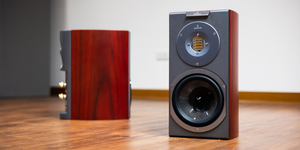
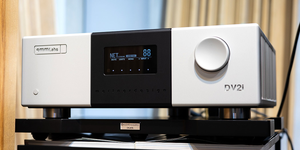


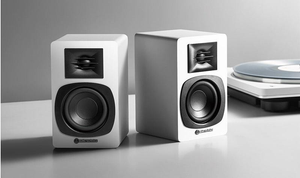
Comments